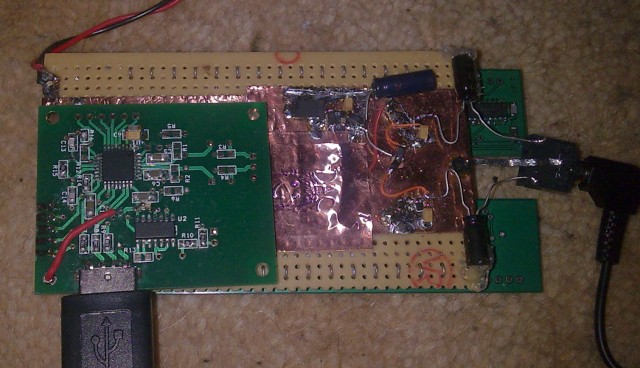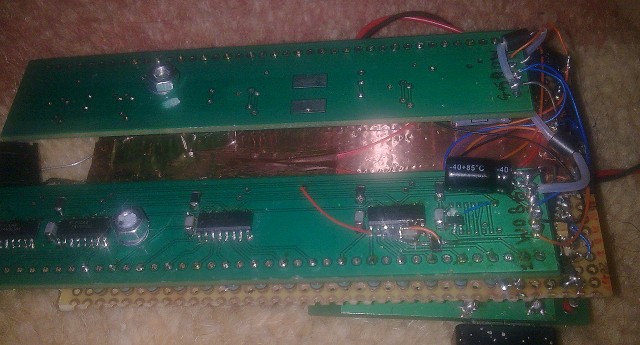
USB Discrete DAC
 |
USB Discrete DAC |
The USB Discrete DAC was an experiment to see how well a computer source would work. To speed development time, a USB to I2S PCB kit based around the PCM2706 was purchased (DIY Paradise) to provide the front end, with some mild tweaking.

As power derived from the computer source is generally quite noisy, this part of the circuit is electrically isolated from the DAC itself. The DAC runs off battery power and is intended to output to headphones without a dedicated offboard amplifier.
While it would have been nice to implement the same quality of digital filtering that is present in the other designs, the computer is incapable of doing the work as the PCM2706 only supports up to 48kHz sampling rate. This left two options - a digital filter chip, or go zero oversampling.
Oversampling didn't look to be a good idea as the general consensus seems to be that most USB audio devices (PCM2706 included) have terrible jitter... oversampling is only likely to make things worse, and also will result in a lot more battery consumption (combined effect of the filter chip and the DAC having to run faster, plus logic to rejig the signals). So it was decided to go zero oversampling.
Experience of zero oversampling DACs had suggested pretty mediocre sound so far, but going direct to transducer, it was thought it could work much better. While the DAC is capable of driving high impedance headphones (like the Sennheiser HD-600 it was intended for) directly with reasonable volume, fluctuations in the driver impedance affect the tonality significantly.
For this reason an output stage was required. With feedback, no less (eek!). For the output stage to work effectively, it needed to be able to cope properly with the the higher levels of ultrasonic harmonics inherent in zero-oversampling D/A conversion. This is achievable by using very high bandwidth transistors. A simple push-pull MOSFET output is used, running off its own regulator - dropping a few volts greatly reduces power consumption around the crossing point, at the expense of some headroom.
Measurements confirmed that no intermodulation is visible above the noise floor, and the frequency response at the top is flat to 20kHz... quite an unusual thing for a zero-oversampling DAC. Output is AC coupled with good quality polarised electrolytics. It's always nice to use exotica when feasible, but in this case, it wasn't... too heavy, too bulky.

The
Discrete 16-bit ladders are hidden beneath the demultiplexing boards...
it is just about possible to see some of the metal film network
balancing resistors feeding down into the SMD R-2R network.